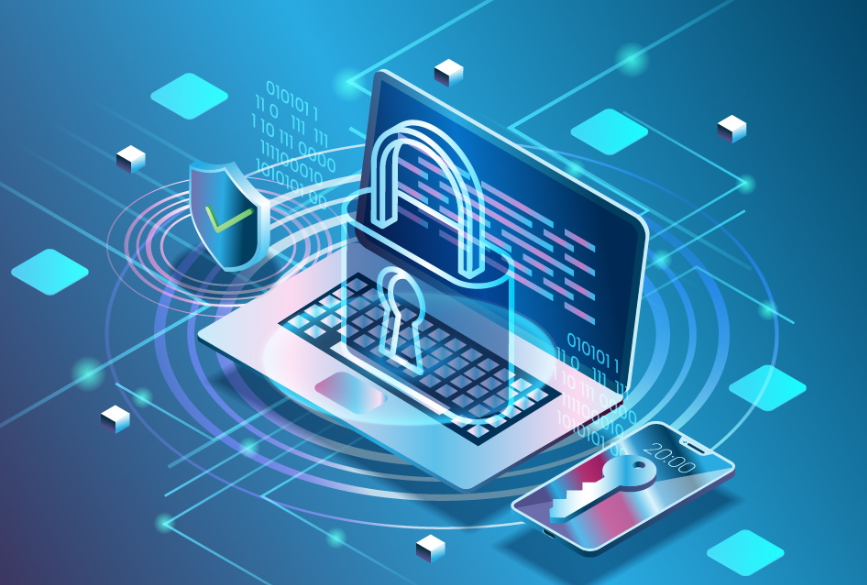Cybersecurity: Protecting the Digital World
In today’s interconnected world, the digital landscape has become an integral part of daily life. From banking and shopping to communication and entertainment, technology underpins almost every aspect of modern society. However, with the increasing reliance on digital systems, the need for cybersecurity has never been more pressing. Cybersecurity plays a pivotal role in safeguarding individuals, businesses, and nations from an ever-growing number of cyber threats.
The Growing Importance of Cybersecurity
The world has witnessed a rapid shift toward digitalization. According to recent studies, over 5 billion people globally use the internet, and this number continues to grow. With the increase in digital interactions, the opportunities for malicious actors to exploit vulnerabilities in systems also rise. Cyberattacks have evolved from isolated incidents to widespread threats targeting critical infrastructure, sensitive personal data, and even national security.
Cybersecurity, defined as the practice of defending computers, servers, mobile devices, networks, and data from malicious attacks, is now more vital than ever. The potential consequences of cyberattacks, such as identity theft, financial loss, and data breaches, highlight the need for robust cybersecurity measures.
Types of Cyber Threats
Cybersecurity is a complex and multifaceted field that addresses various types of cyber threats. Some of the most common and dangerous threats include:
- Malware: Short for “malicious software,” malware refers to any software intentionally designed to damage or disrupt a system. Common examples include viruses, worms, Trojans, and ransomware. Malware can corrupt files, steal sensitive information, or even take control of a system.
- Phishing: Phishing attacks use deceptive emails, websites, or messages to trick individuals into revealing personal information such as usernames, passwords, or financial details. These attacks can appear to come from trusted sources like banks, social media platforms, or even colleagues.
- Ransomware: This is a form of malware that encrypts the victim’s data and demands a ransom for its release. Ransomware attacks have skyrocketed in recent years, targeting organizations of all sizes, from small businesses to government agencies.
- Distributed Denial of Service (DDoS): A DDoS attack floods a network with traffic, overwhelming the system and causing it to crash or become inaccessible. These attacks are often used as a smokescreen for other malicious activities or to disrupt the operations of targeted organizations.
- Man-in-the-Middle (MITM) Attacks: In this type of attack, the attacker intercepts and alters communication between two parties, usually without either party’s knowledge. This can lead to the theft of sensitive information or the manipulation of data in transit.
- Insider Threats: These threats come from within an organization, often in the form of disgruntled employees or negligent staff members. Insider threats can be particularly difficult to detect because they often involve individuals who have authorized access to systems and data.
See also: The Future of Quantum Computing: Revolutionizing the Digital Era
The Challenges of Cybersecurity
Despite advances in cybersecurity technology, there are several challenges that hinder the effectiveness of protection mechanisms:
- Rapid Technological Advancements: As technology evolves, so do the methods and tools used by cybercriminals. New vulnerabilities are discovered in systems and software almost every day, making it a constant race to stay ahead of threats.
- Complexity of Cyber Threats: Cyberattacks are becoming more sophisticated, and cybercriminals are using increasingly advanced techniques to bypass security measures. This requires continuous innovation and adaptation of security practices to respond to emerging threats.
- Human Error: A significant portion of cybersecurity breaches is caused by human mistakes, such as weak passwords, lack of awareness, and falling victim to phishing scams. Training and educating users are vital to reducing the risk of such errors.
- Data Privacy Concerns: With the growing amount of personal and financial data stored online, the protection of privacy has become a major concern. Data breaches can have devastating consequences for individuals, and businesses are under increasing pressure to protect user data.
- Resource Limitations: Many smaller businesses and organizations struggle to implement effective cybersecurity measures due to limited resources. This can leave them vulnerable to attacks, as they may not have the necessary tools, expertise, or personnel to defend their systems adequately.
Best Practices for Cybersecurity
Given the evolving nature of cyber threats, it is essential for individuals and organizations to adopt best practices to bolster their cybersecurity efforts. Some of the most effective strategies include:
- Use Strong Passwords: Passwords are often the first line of defense against cyberattacks. Using strong, unique passwords for different accounts and enabling multi-factor authentication (MFA) can significantly reduce the risk of unauthorized access.
- Regular Software Updates: Keeping software, operating systems, and applications up to date is one of the simplest yet most effective ways to protect against cyberattacks. Many cyberattacks exploit vulnerabilities in outdated software, so regular updates are crucial for patching security flaws.
- Implement Firewalls and Antivirus Software: Firewalls and antivirus programs serve as a barrier between a device and potential threats from the internet. They can block malicious traffic and scan for malware, providing an extra layer of defense.
- Data Encryption: Encrypting sensitive data ensures that even if it is intercepted by attackers, it cannot be read without the decryption key. Encryption is especially important for financial transactions and confidential communications.
- Regular Backups: Regularly backing up important data to a secure location ensures that, in the event of a ransomware attack or data loss, the data can be restored without having to pay a ransom or face significant downtime.
- Educate and Train Users: Organizations should invest in ongoing cybersecurity training for their employees. This includes teaching them how to recognize phishing attempts, use secure passwords, and follow safe internet practices.
The Future of Cybersecurity
As we continue to embrace new technologies like the Internet of Things (IoT), artificial intelligence (AI), and blockchain, the cybersecurity landscape will undoubtedly evolve. These technologies introduce new vulnerabilities that cybercriminals could exploit, making it more important than ever to stay ahead of potential threats.
In the future, we may see more advanced AI-powered security tools that can detect and respond to threats in real-time. Additionally, as more organizations move to cloud computing, cloud security will become a major area of focus, with efforts aimed at safeguarding data and applications stored in remote servers.
Governments and international organizations are also working to establish better frameworks for cybersecurity, with the goal of creating a global effort to combat cybercrime. This could include standardized regulations, more robust data protection laws, and greater cooperation between nations to combat cross-border cyber threats.
Conclusion
In an increasingly digital world, cybersecurity is no longer optional – it is a necessity. As cyber threats continue to grow in complexity and scale, both individuals and organizations must take proactive steps to protect themselves and their data. By adopting best practices, staying informed, and investing in the right cybersecurity tools and strategies, we can help ensure that the digital world remains a safe and secure place for everyone. The fight against cyber threats is ongoing, but with vigilance and collaboration, we can work together to protect the digital world.





